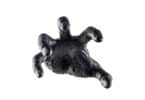Psychedelic interest is in full swing and curious consumers are trying to get their hands on good products anywhere they can. Sometimes, it’s as easy as calling your local plug and having it delivered to your door. Other times, it means trekking out into the middle of the desert and hunting down a hallucinogenic toad. In response to the latter, the National Park Service released a statement urging visitors to “stop licking toads” while on federal land.
Licking toads?
A few weeks ago, the National Park Service posted a rather comical note on their Facebook page asking visitors not to lick any of the animals they encounter, in particular, the Sonoran desert toad. These toads excrete a toxic venom from their glands that can kill small animals but is known to produce hallucinogenic effects in humans.
The post from NPS warned visitors that the toxins can make you sick, especially if they get directly into your mouth. “As we say with most things you come across in a national park, whether it be a banana slug, unfamiliar mushroom, or a large toad with glowing eyes in the dead of night, please refrain from licking,” the post reads.
In addition to the possible risks (negative physical ones aside, it’s not always a good idea to trip balls in the middle of the desert), it’s also illegal on many fronts. For starters, harassing wildlife in national parks is a federal crime. Not to mention, the DEA still has 5-MeO-DMT listed as a Schedule I narcotic, meaning it’s viewed has having “no accepted medical uses and a high potential for abuse and addiction”, as absurd as that is.
Why are people licking toads?
So, the term “licking toads” is not exactly accurate. If people are out their putting their mouths directly on the toad, then they’re doing it wrong. To utilize the 5-MeO-DMT, the liquid from toad’s glands is extracted by gently squeezing them (think popping a pimple) onto some wax paper or similar surface, and then dried into a paste. This paste is then smoked or vaped, and users experience a powerful psychedelic trip that starts within 10 to 30 seconds and lasts about 15-20 minutes, although trips as long as 2 hours have been reported.
5-MeO-DMT (5-methoxy-N,N-dimethyltryptamine) or O-methyl-bufotenin is a tryptamine psychedelic that can be obtained from numerous sources in nature. Aside from the toad, 5-MeO-DMT is found in a couple dozen different plants as well as two species of Amanita mushrooms, that we know of.
Sonoran desert toads (Bufo alvarius/Incilius alvarius, also known as Colorado river toads) hail from the southwestern regions of the United States and some sections of northwestern Mexico. In the U.S., people most commonly find these toads in the far southeastern corners of California, as well as throughout Arizona and New Mexico. It’s about six to seven inches in length, carries a low-pitched ribbit sound, and is usually tan, grey, or greenish in color.
The high from DMT is very intense and a single does can lead to life changing revelations, which is why the toad has become so sought-after. Numerous different forms of the substance have been used in spiritual ceremonies for hundreds of years. Today, we’re seeing an uptick in DMT retreats, where people travel from all over the world to participate in therapeutic events that incorporate this compound.
More ethical ways to source DMT
In recent years, smoking the amphibian’s secretions has become rather trendy — to the point that the New Mexico Department of Game & Fish has recently updated the toad’s status as “threatened”. Of course, this isn’t entirely the fault of adventurous psychonauts; habitat destruction, pollution, increased traffic, and use of pesticides are also to blame. Currently, their population remains stable in Arizona and Mexico.

Now, while I’m all in favor of entheogens, but I’m vehemently against the pestering of wildlife in any way. As a landscape and wildlife photographer, and a general nature enthusiast, this goes without saying. It’s important to keep in mind that the act of venom secretion is a defense mechanism that the toad uses when it is in fear for its life. So, it seems rather pointless and somewhat cruel to hunt them down for a high when 5-MeO can be extracted from so many plants, which you can find rather easily with a quick online search.
Another option is to synthesize DMT from other compounds. Similar to cannabinoids, one compound can be converted into another with the right equipment and expertise (like turning CBD into THC, for instance). While many people who use natural psychedelics are not too keen on trying a synthetic version of DMT, the idea does work for some consumers.
In Mexico and select countries in Central and South America, toad venom is still used for its traditional purposes. It’s believed that when using DMT from the actual toad, the high is different than with plant extracts and synthetics because you’re harnessing the spirit of the animal in your high. And while it’s true that every living creature has a type of energy, the toads are found in such low numbers in North America that it’s just not a sustainable source for DMT, especially as it grows in popularity and the psychedelics market continues to expand.
Final thoughts
Regardless of your thoughts on the best sources of 5-MeO-DMT, the National Park Service has solidified their stance – when you’re on federal land, you cannot bother the toads. It’s illegal, risky, and downright mean. If you want to try DMT another way, explore one of the many other methods of extracting or synthesizing it in the comfort of your own home.
Welcome all! Thanks for joining us today at Cannadelics.com; a news site where we work hard to bring you the best reporting from the cannabis and psychedelics spaces. Drop by regularly to stay updated on everything going down, and subscribe to the Cannadelics Weekly Newsletter, so you’re never late to get the news.









